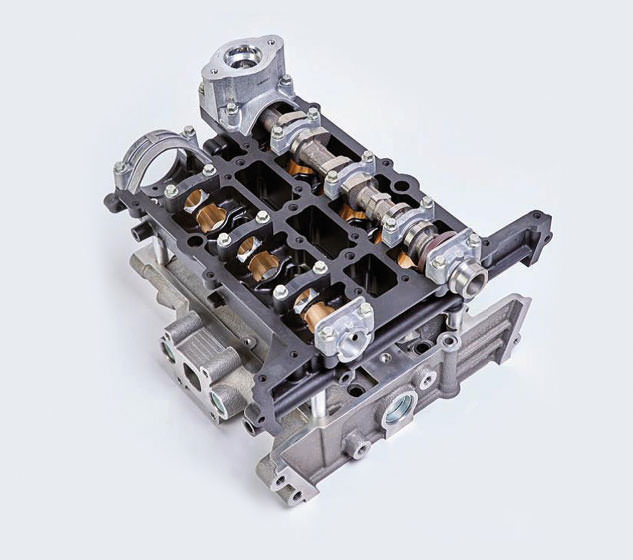When Everything Comes Together: Assembly
Fasteners
Engineering thermoset parts can be assembled using threaded fasteners. There are a number of self-tapping screws with different configurations and thread profiles that are available for metals and plastics. They all fall into two general categories: thread forming and thread cutting.
Thread forming screws are designed to push material out of the way as they are driven in. The displaced material subsequently flows back into features on the threads locking them in place. Forming style screws can generate a
large amount of hoop stress in the boss due to the material they displace. This type of fastener is not appropriate for stiff materials that do not cold flow and is therefore not recommended for use with engineering thermosets.
Thread cutting screws have a cutting edge, similar to a tap, that removes material as they are driven in. This type of screw does not generate the hoop stress that forming types do. It is recommended that only cutting style selftapping screws be used with engineering thermosets. Fasteners, such as the Delta PT type DS from Ejot designed specifically for use with thermosets, or similar thread cutting screws from ITW Shakeproof, Screwerks, ATF or other manufacturers will provide the best results.
Care must be taken when inserting self-tapping screws. Automated screwdrivers set at speeds appropriate for metals are likely running too fast for engineering thermosets. This can result in cracking in the boss. Threaded inserts with knurled or diamond pattern exteriors can be used with engineering thermosets, but only if they are insert molded into the part. Heat staking, ultrasonic staking or cold staking of inserts is not recommended.
Boss design is also important when using mechanical fasteners. See earlier section on part design for recommended boss dimensions. Hole dimensions should comply with those specified by the manufacturer for the type of fastener selected.
Adhesive bonding
A variety of high strength structural adhesives systems are available for bonding engineering thermoset parts. Joint design, adhesive selection, substrate preparation and the bonding process are all critical to the success of a structural adhesive assembly. It is recommended, therefore, that the user consult with a structural adhesive manufacturer early in the design process for technical assistance with joint design, and selection of an adhesive system appropriate for the application.
Loctite, ITW Plexus, Delo and 3M Structural Adhesives are a few of the well known manufacturers of high performance adhesives for structural assembly of engineering thermosets.
Other assembly methods
Common plastic assembly methods that require the material to soften or deflect, such as sonic or vibrational welding, solvent bonding or heat staking are not recommended for engineering thermoset resins. The inherent infusibility of the resins prevents these methods from working as designed. Snap fits, in theory, can be designed for any material that has sufficient ductility. But these must be approached with caution on an individual basis. In general, engineering thermoset molding compounds, when cured, do not have sufficient ductility to allow design of a robust snap fit. This is especially true for grades that are filled with mineral or glass fibers.
